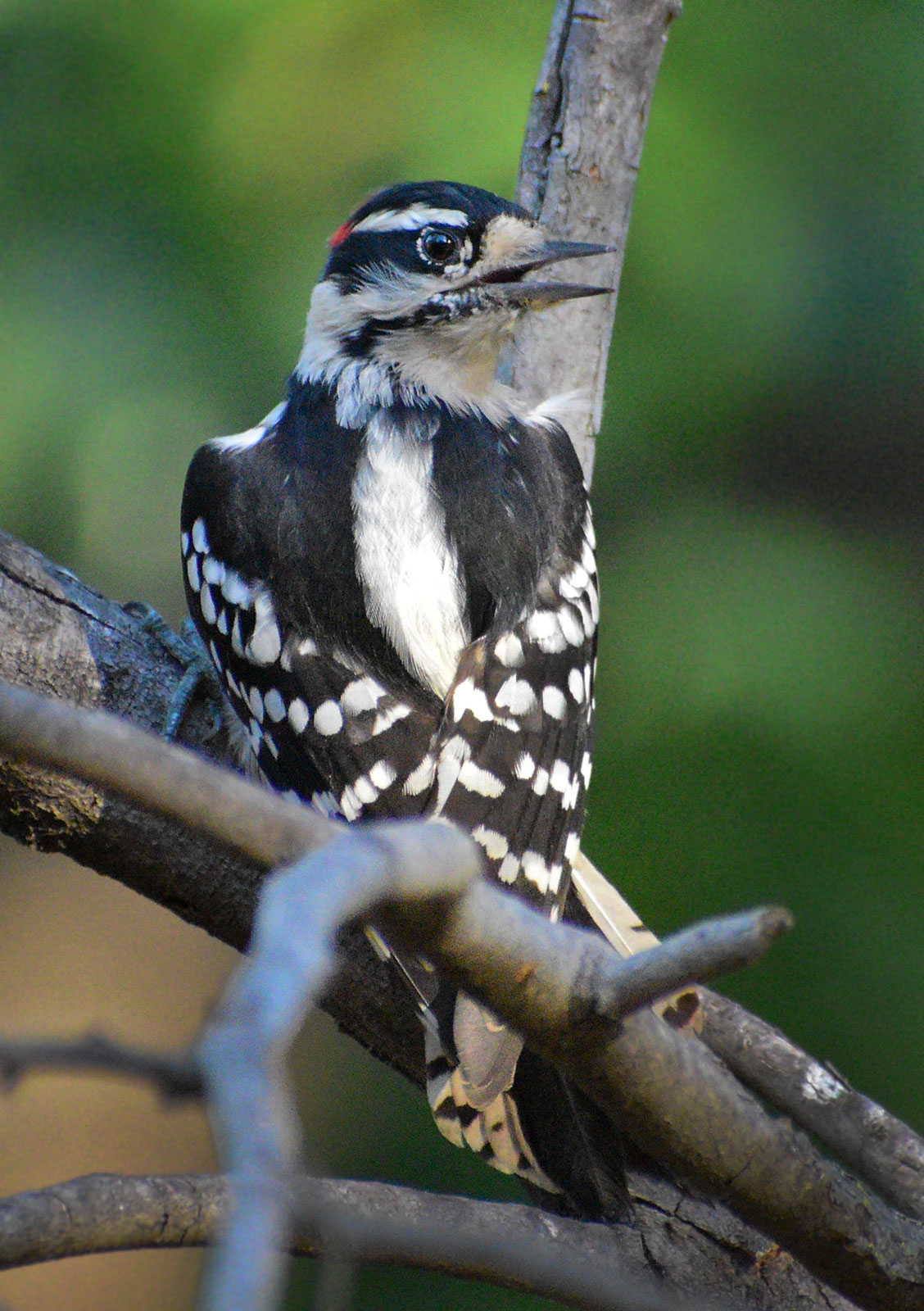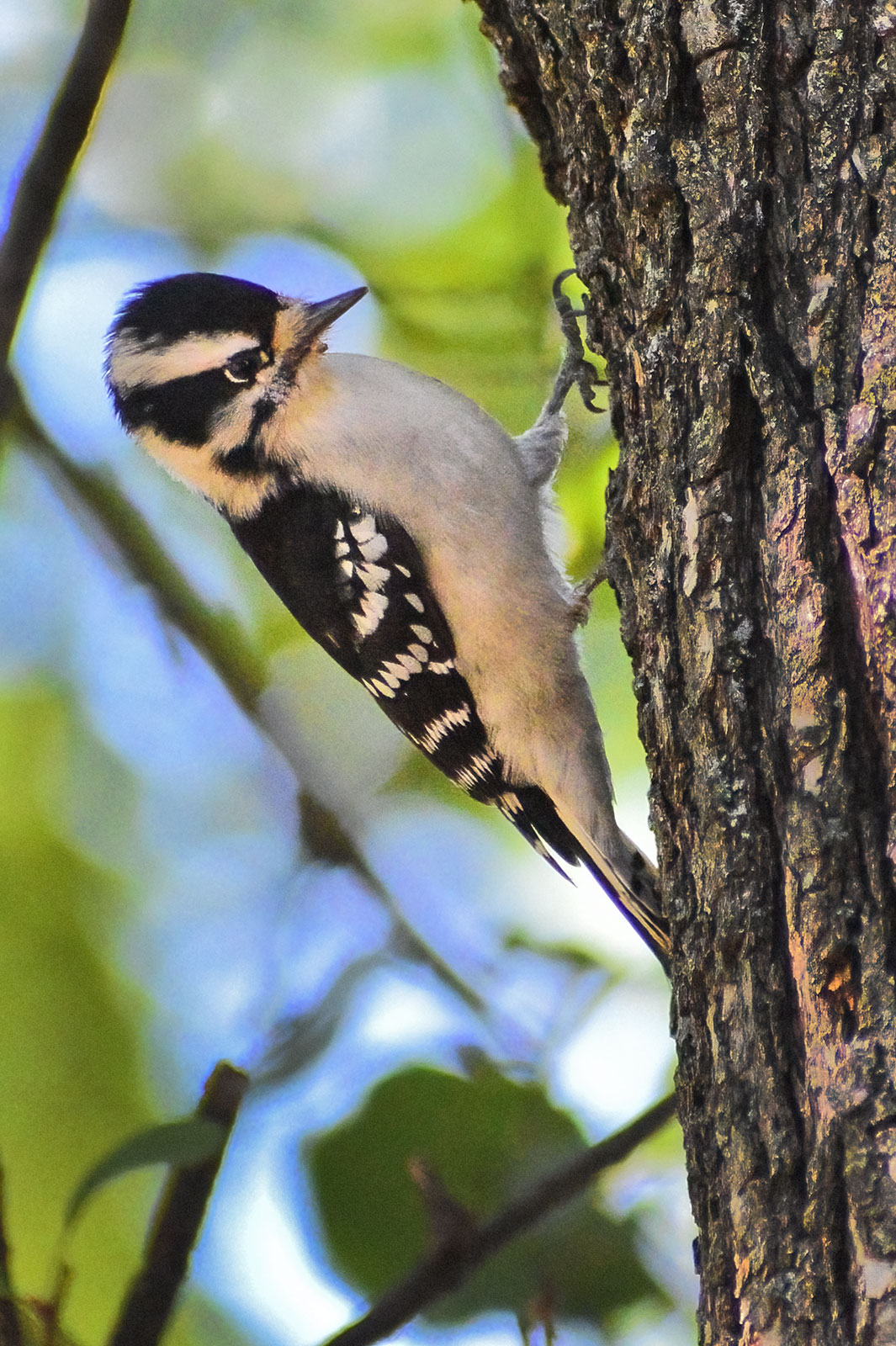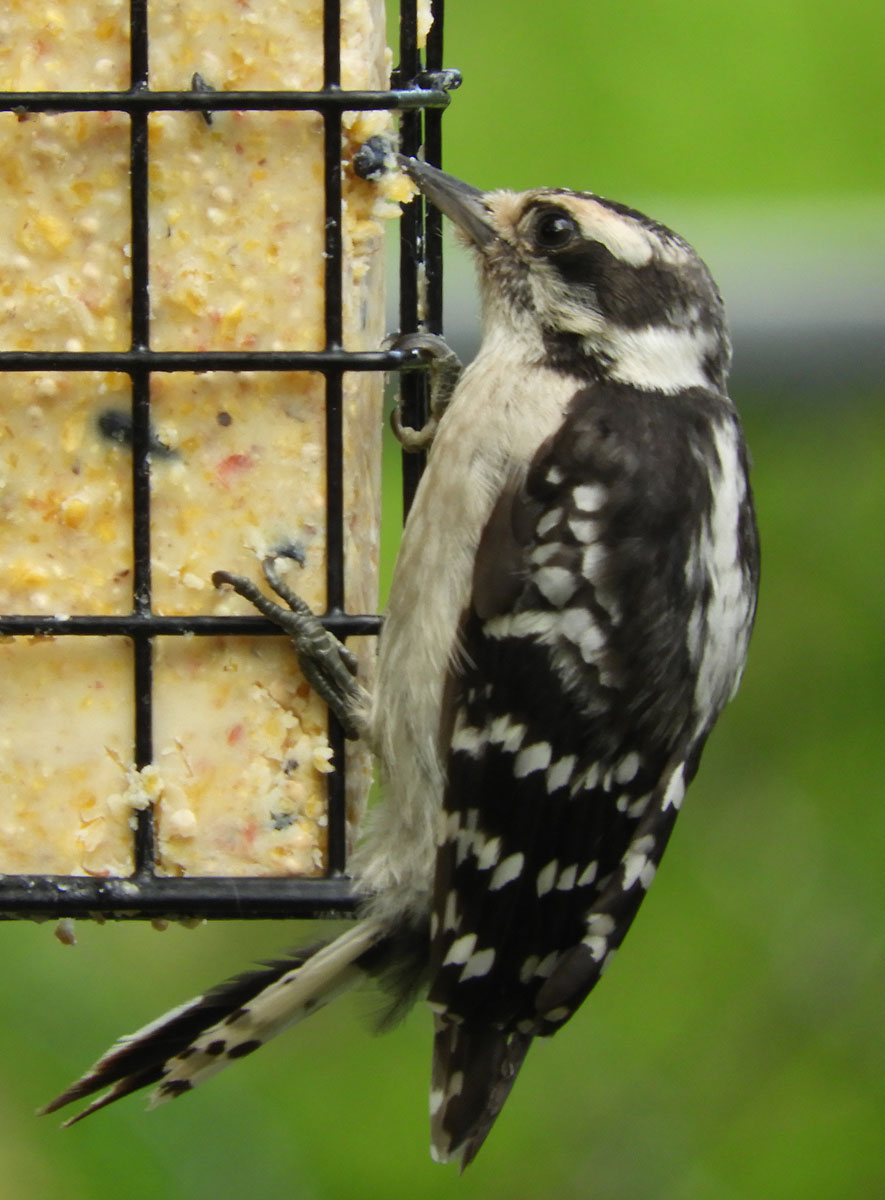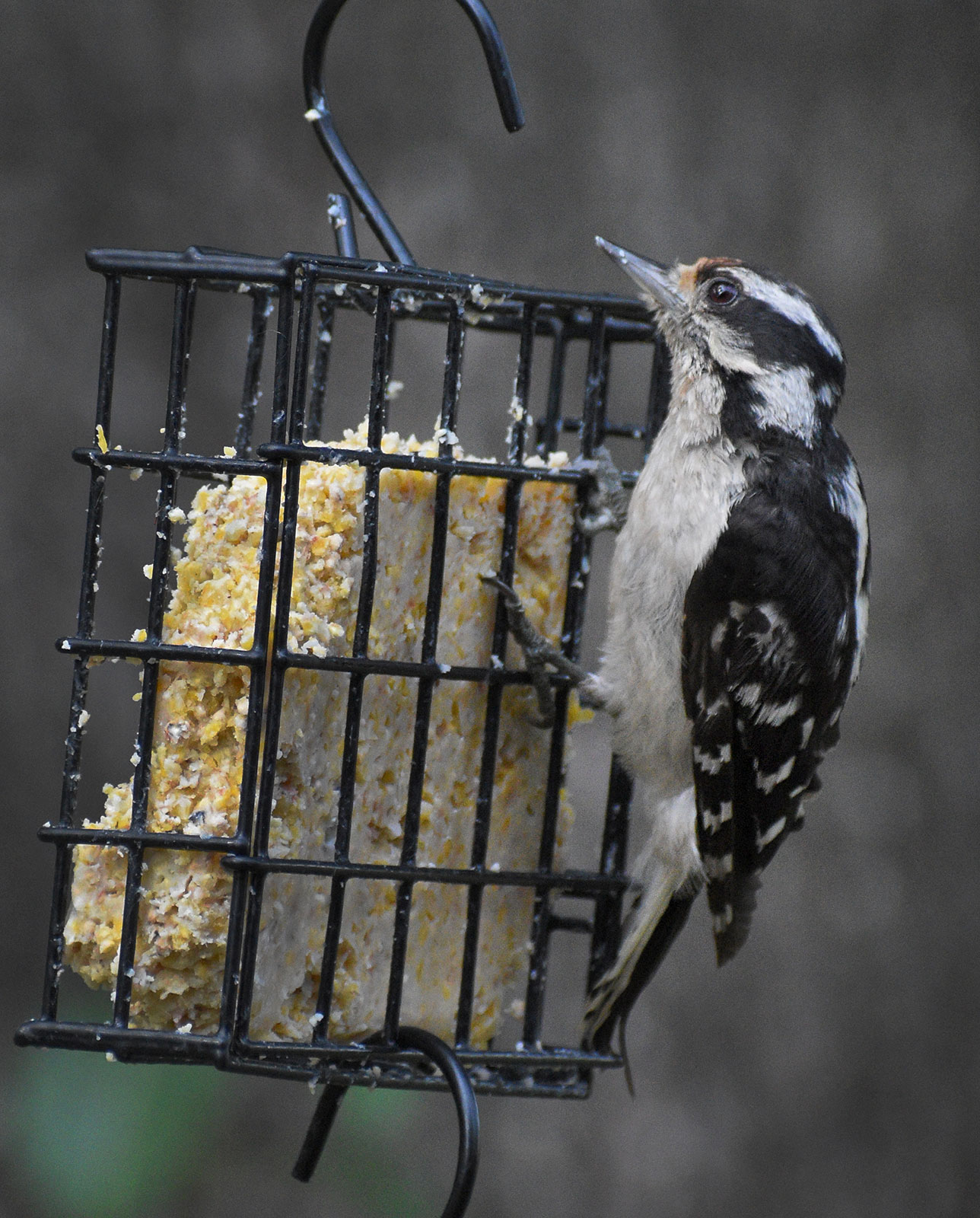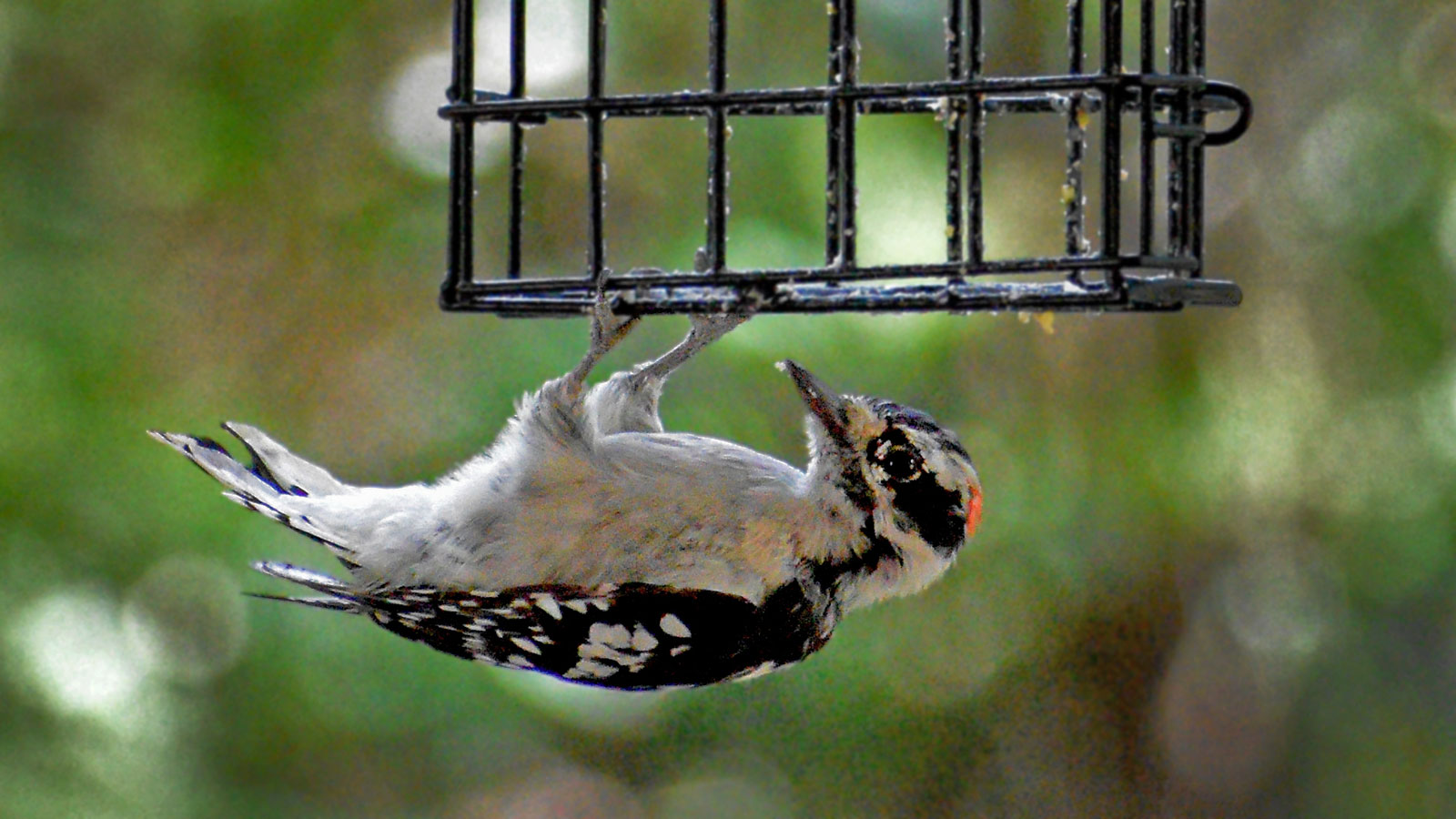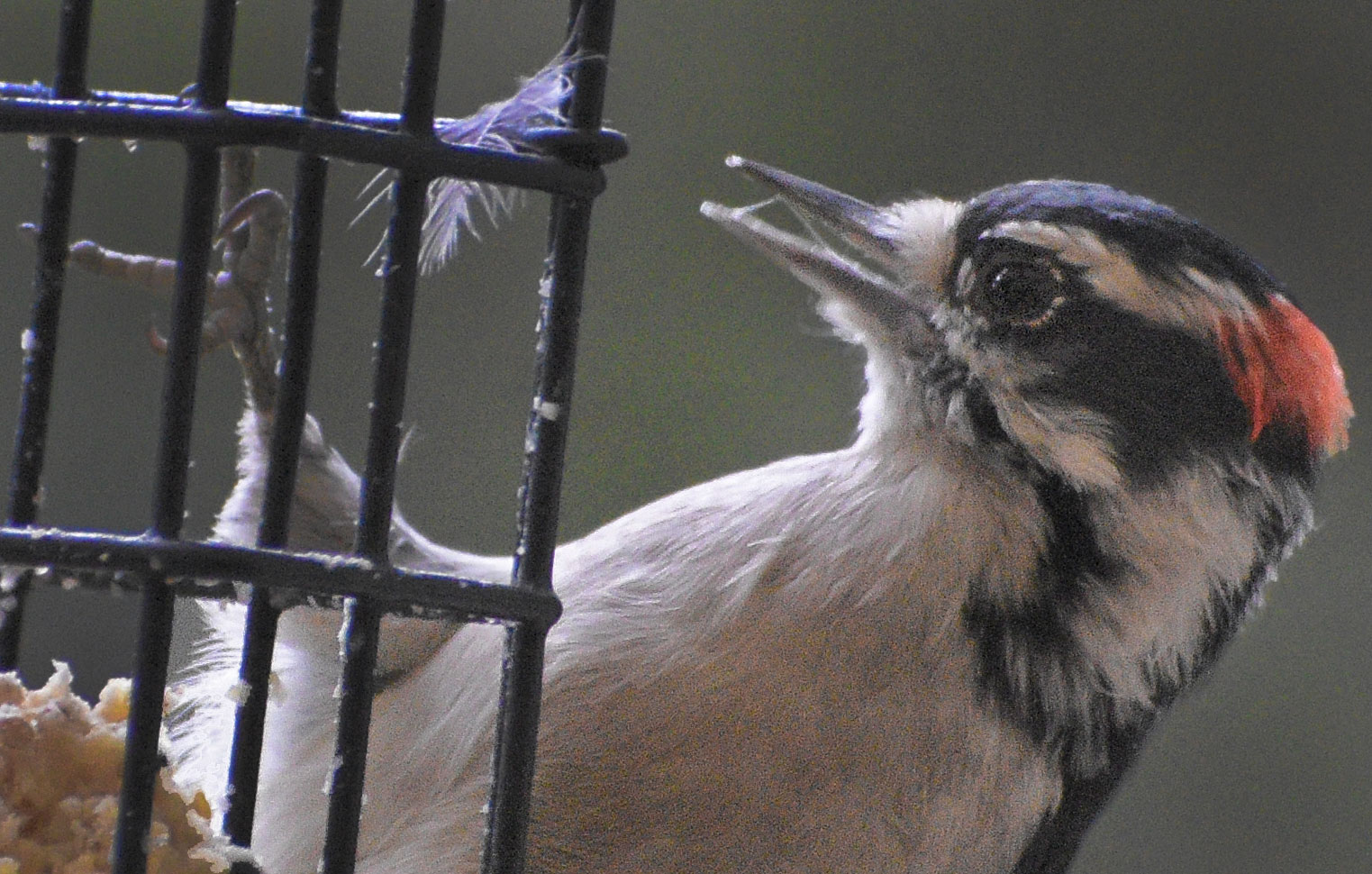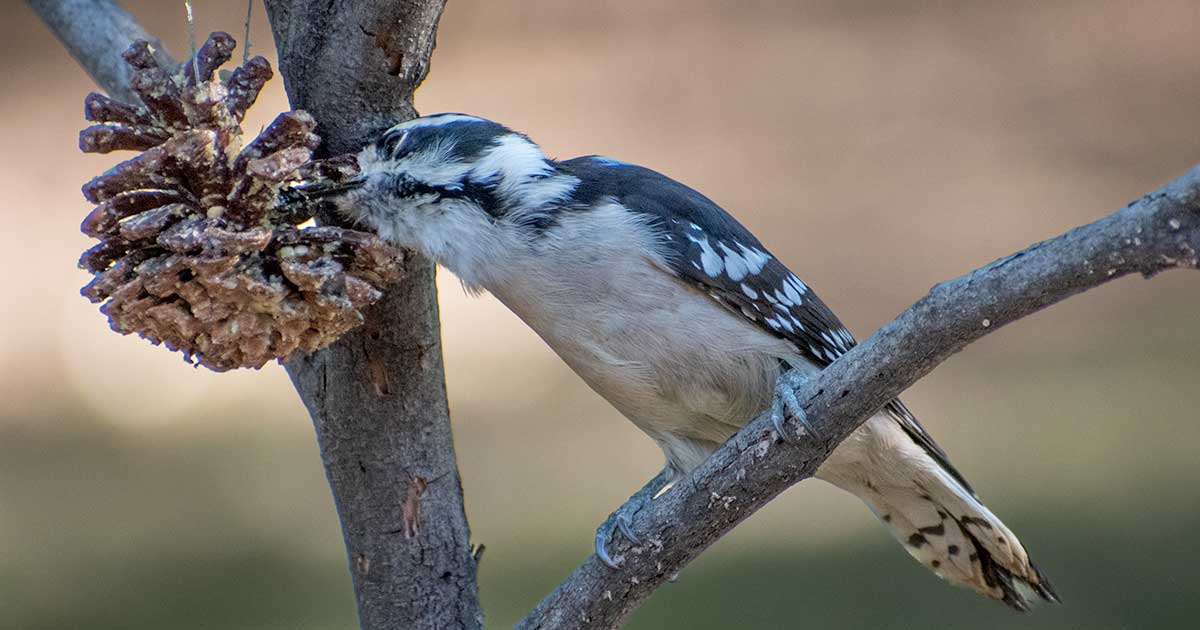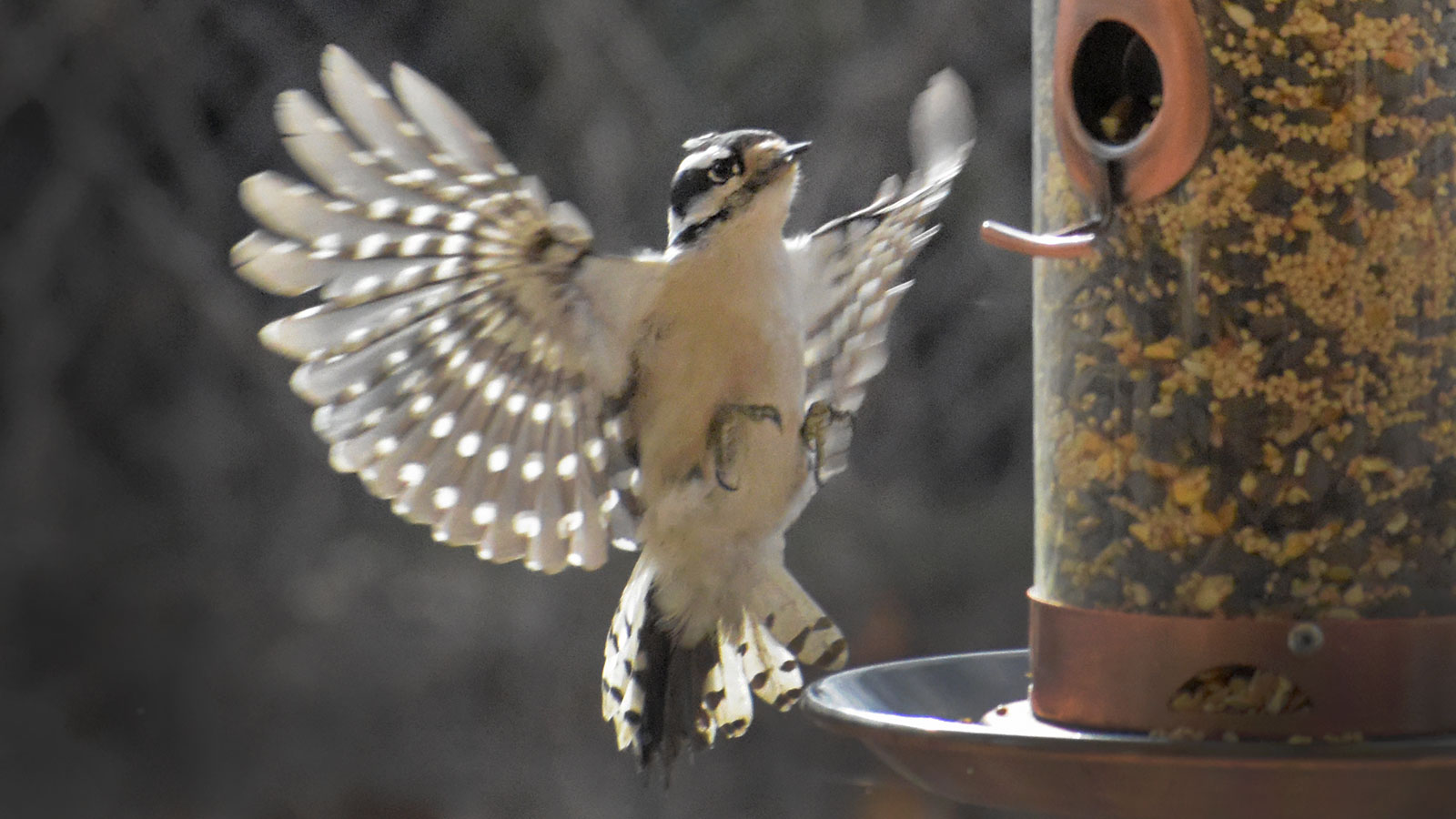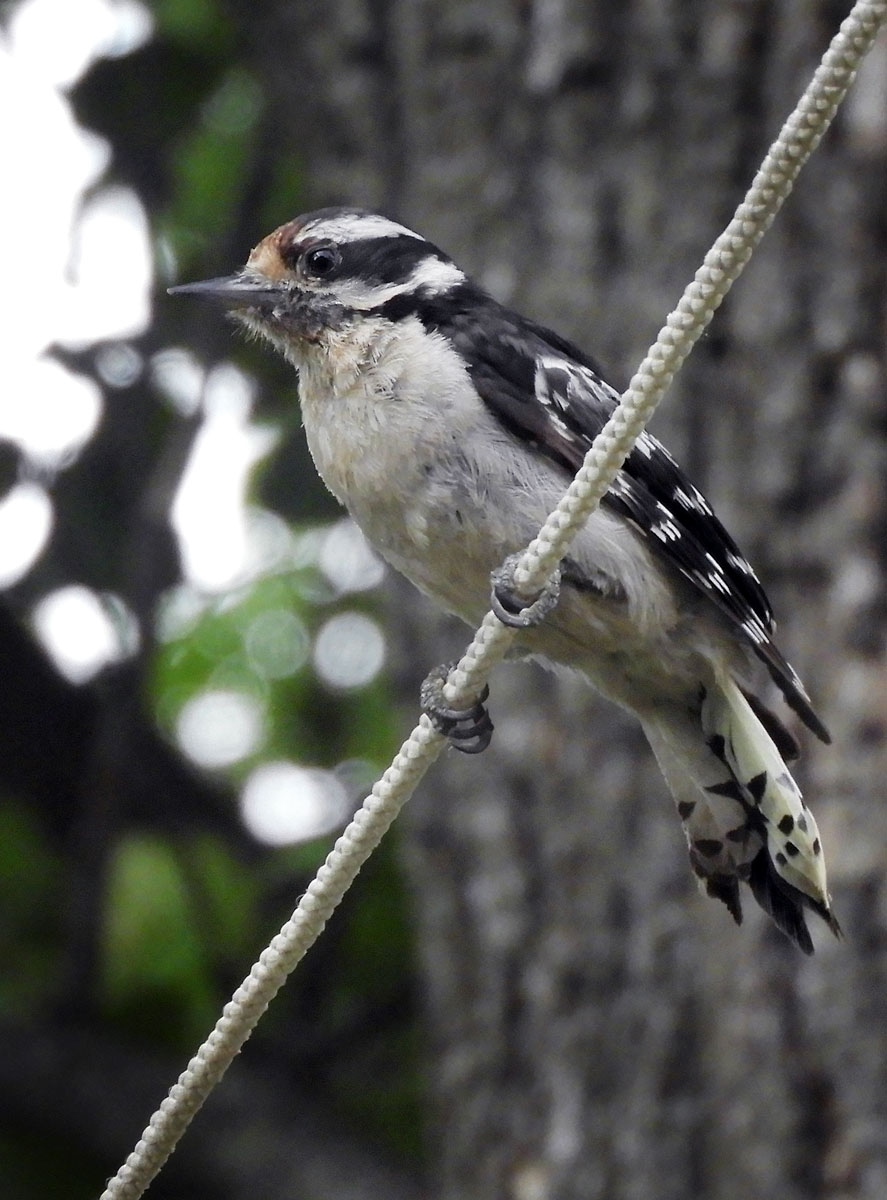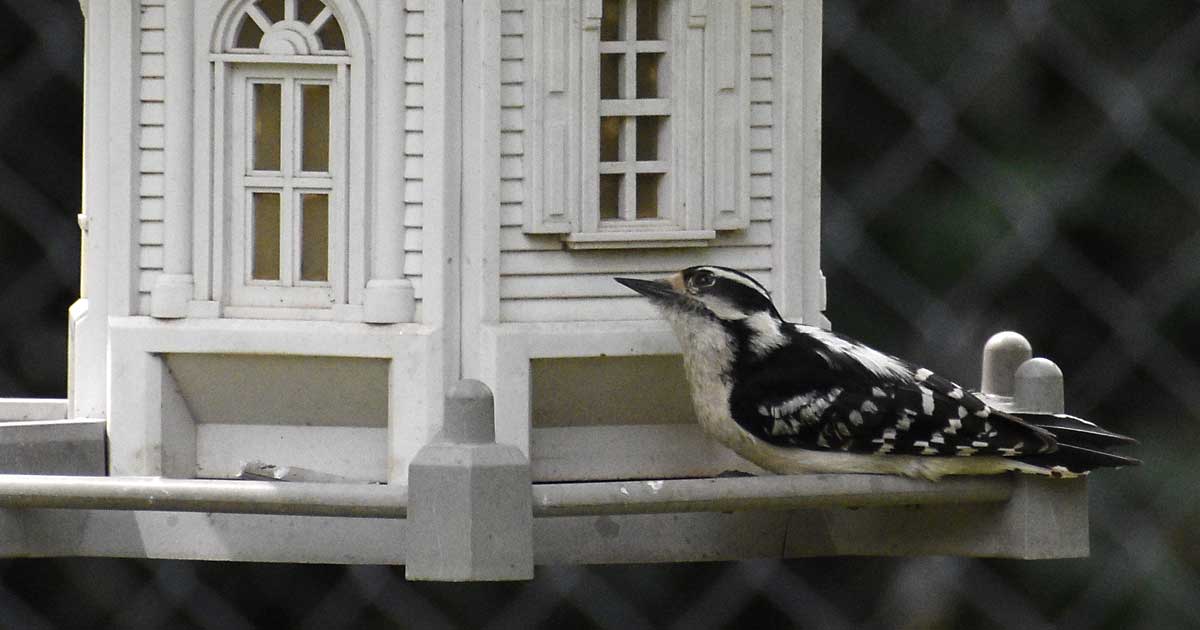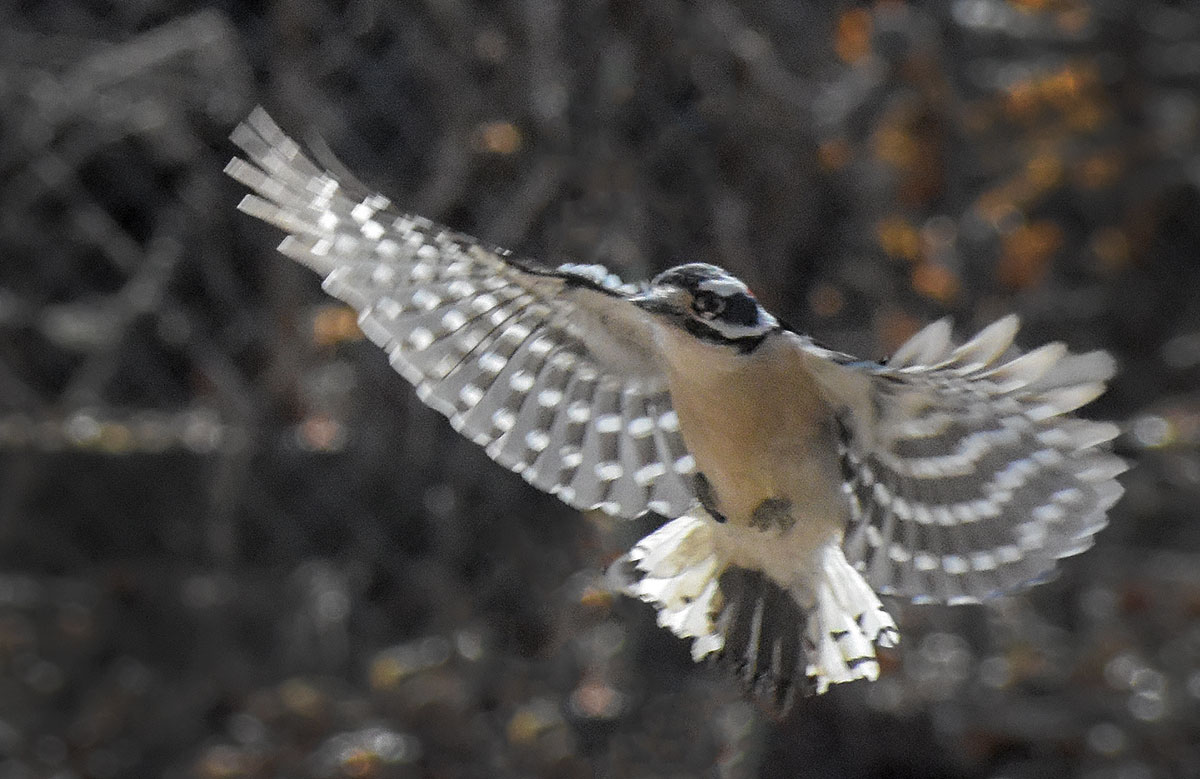
The active little Downy Woodpecker is a familiar sight at my backyard feeders and is one of my favorite birds. The Downy Woodpecker is a small bird with short bill, they are the smallest woodpecker species in North America. White below, upperparts mostly black with a white back and bold white spots in the wings. Head striped black and white, with a red nape. Females lack the red spot on the nape. While it’s hard to tell a Hairy Woodpecker from a Downy Woodpecker, you can usually differentiate by the smaller size of the Downy and the smaller bill.
When you hear that distinctive knocking in the woods, you know a woodpecker is nearby. Woodpeckers peck at trees with impressive force. Males and females drum steadily on trees to defend their territory, attract mates, or maintain contact with their mate.
Downy Woodpeckers feed in the wild on insects, especially wood-boring larvae, caterpillars and ants. They are particularly fond of the larvae of carpenter bees, leafcutter bees, and grass bagworms. You’ll often see them on the sides of trees where they pick and probe bark for insects and larvae.
Downy Woodpeckers hitch around tree limbs and trunks or drop into tall weeds to feed on galls, moving more acrobatically than larger woodpeckers. Their rising-and-falling flight style is distinctive of many woodpeckers. In spring and summer, Downy Woodpeckers make lots of noise, both with their shrill whinnying call and by drumming on trees. Males will sometimes perch on branches like a songbird.
They prefer suet feeders, but are also fond of black oil sunflower seeds, millet, peanuts, and chunky peanut butter. Pleasing this little fella and perhaps attracting more is what motivated me to put up some suet feeders with a suet blend for woodpeckers.
My suet feeders seem to be “common ground” for several bird species. Usually the more aggressive European Starlings will dominate the feeders while the downies wait patiently for their turn. When there are several downies at suet feeders, unlike the Starlings, they take turns and I’ve never witnessed aggressive behavior from them.
The Downy Woodpecker is amazingly friendly with people. I have suet feeders hanging on my back porch and they regularly come up to them to feed, even when I’m sitting close to them.
Like the other members of the woodpecker clan, the downy has a distinct undulation flight that is most evident when it crosses open areas or swoops through woodlands.
Instead of a distinct red spot on their nape, juveniles have red feathering on the cap. Like their adult counterparts, the young males have red on their heads and the females do not. The red on the head of the juvenile male is not a small spot on the back of the head as in the adult male, but a much larger area of red and pink on the whole crown.


